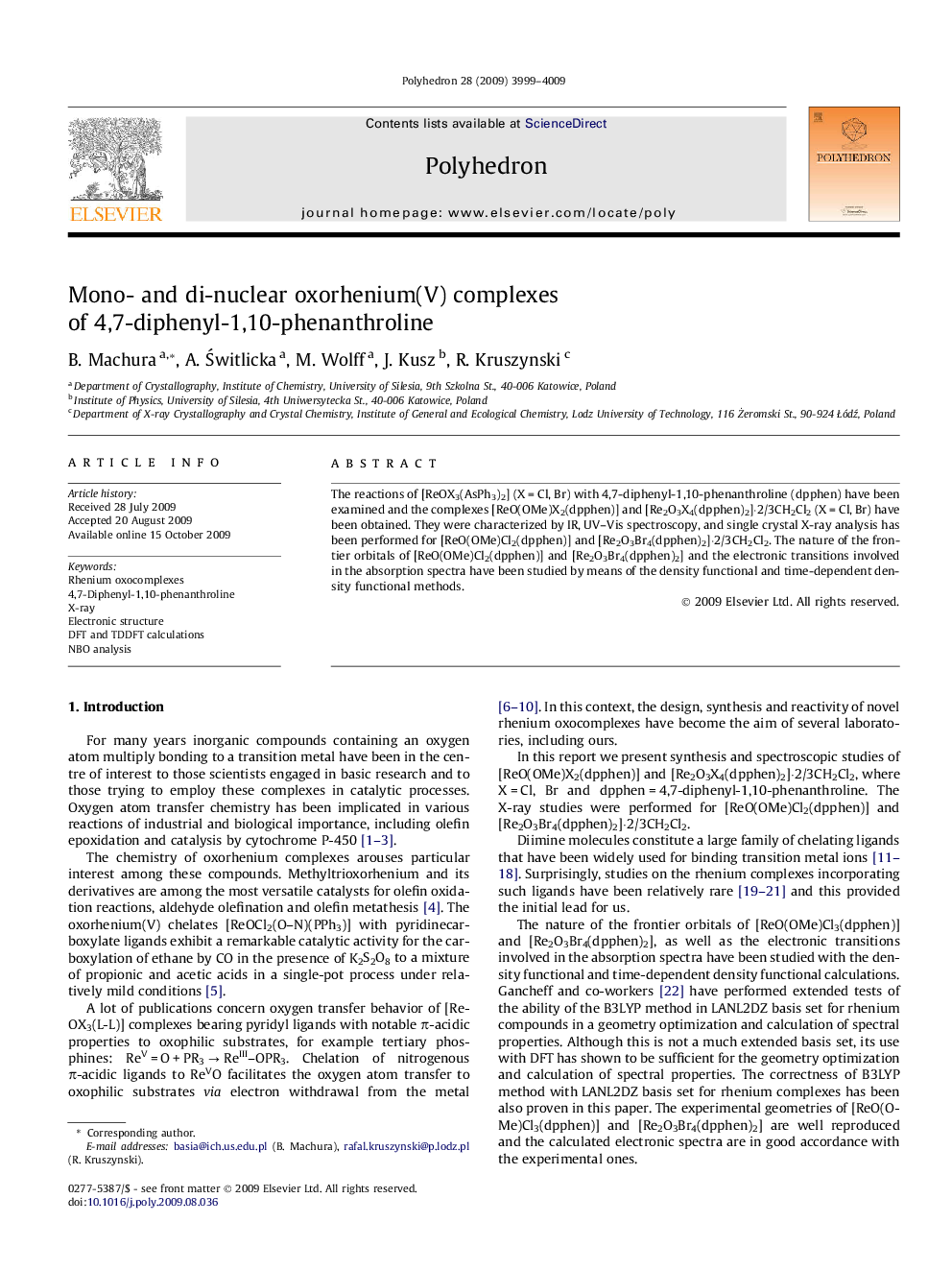| Article ID | Journal | Published Year | Pages | File Type |
|---|---|---|---|---|
| 1338895 | Polyhedron | 2009 | 11 Pages |
The reactions of [ReOX3(AsPh3)2] (X = Cl, Br) with 4,7-diphenyl-1,10-phenanthroline (dpphen) have been examined and the complexes [ReO(OMe)X2(dpphen)] and [Re2O3X4(dpphen)2]·2/3CH2Cl2 (X = Cl, Br) have been obtained. They were characterized by IR, UV–Vis spectroscopy, and single crystal X-ray analysis has been performed for [ReO(OMe)Cl2(dpphen)] and [Re2O3Br4(dpphen)2]·2/3CH2Cl2. The nature of the frontier orbitals of [ReO(OMe)Cl2(dpphen)] and [Re2O3Br4(dpphen)2] and the electronic transitions involved in the absorption spectra have been studied by means of the density functional and time-dependent density functional methods.
Graphical abstractThe reactions of [ReOX3(AsPh3)2] (X = Cl, Br) with 4,7-diphenyl-1,10-phenanthroline (dpphen) have been examined and the complexes [ReO(OMe)X2(dpphen)] and [Re2O3X4(dpphen)2]·2/3CH2Cl2 (X = Cl, Br) have been obtained. They were characterised by IR, UV–Vis spectroscopy, and single crystal X-ray analysis has been performed for [ReO(OMe)Cl2(dpphen)] and [Re2O3Br4(dpphen)2]·2/3CH2Cl2. The nature of the frontier orbitals of [ReO(OMe)Cl2(dpphen)] and [Re2O3Br4(dpphen)2] and the electronic transitions involved in the absorption spectra have been studied by means of the density functional and time-dependent density functional methods.Figure optionsDownload full-size imageDownload as PowerPoint slide
